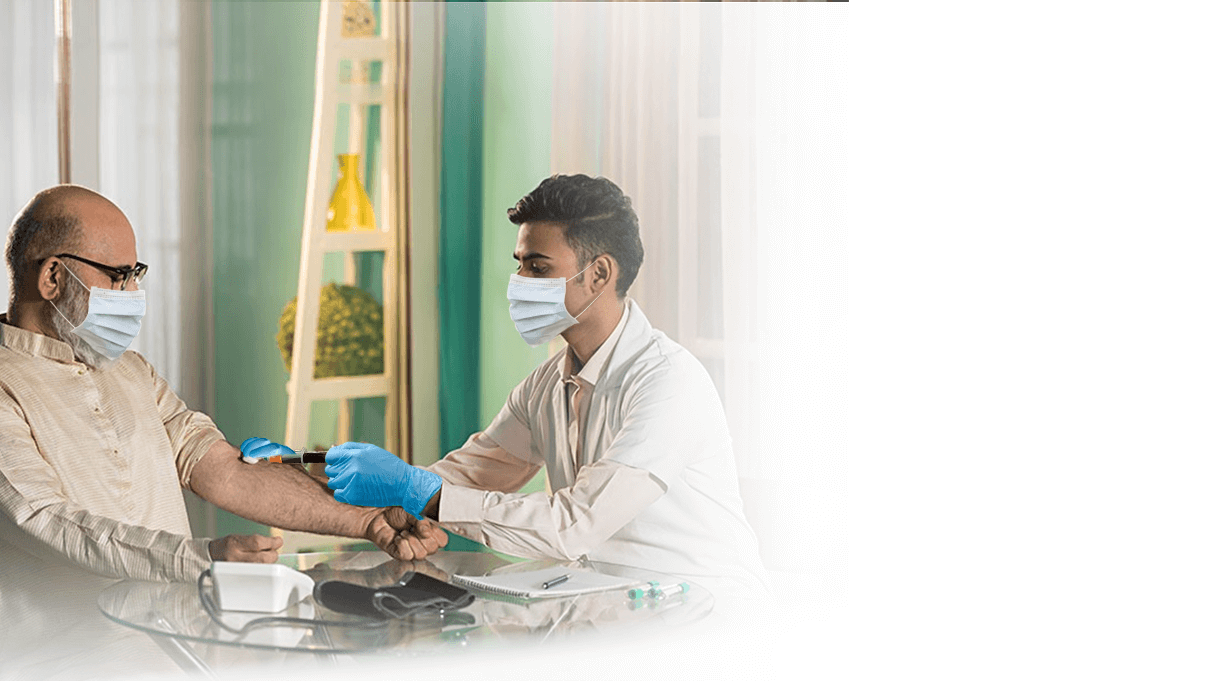High bilirubin symptoms can be signs of underlying liver dysfunction or red blood cell breakdown. Bilirubin is a yellow compound produced during the natural breakdown of red blood cells. It is processed by the liver and excreted in bile. When bilirubin levels become elevated, it can result in jaundice, a yellowing of the skin and eyes, among other symptoms.
What Is Bilirubin?
Bilirubin is produced when old red blood cells are broken down. There are two main forms:
- Unconjugated (indirect) bilirubin: Not yet processed by the liver
- Conjugated (direct) bilirubin: Processed and ready to be excreted in bile
Total bilirubin is the sum of both types. A bilirubin blood test can measure all three levels to assess liver and overall metabolic function.
High Bilirubin Symptoms in Adults
In adults, high bilirubin symptoms often signal liver, gallbladder, or blood disorders. Common signs include:
- Jaundice: Yellowing of the skin and the whites of the eyes
- Dark-colored urine
- Pale or clay-colored stools
- Itchy skin (pruritus)
- Fatigue or general weakness
- Abdominal pain, especially in the upper right quadrant
- Nausea or vomiting
- Loss of appetite
These symptoms suggest the liver is not processing or excreting bilirubin effectively.
High Bilirubin Symptoms in Newborns
Mild jaundice is common in newborns and usually resolves on its own. However, very high bilirubin levels in infants can be dangerous and require prompt treatment. Symptoms include:
- Yellowing of the skin and eyes, beginning on the face and spreading downward
- Poor feeding
- Lethargy or drowsiness
- High-pitched crying
- Arching of the back or body stiffness
Severe jaundice in newborns may lead to kernicterus, a rare but serious condition causing brain damage.
High Bilirubin Causes
Several conditions can lead to high bilirubin levels, either by increasing bilirubin production or interfering with its metabolism or excretion:
In Adults:
- Liver diseases: Hepatitis, cirrhosis, alcoholic liver disease
- Gallstones: Block bile ducts, preventing bilirubin excretion
- Hemolytic anemia: Rapid breakdown of red blood cells
- Gilbert’s syndrome: A mild genetic liver disorder
- Bile duct obstruction: Due to tumors, inflammation, or scarring
- Drug-induced liver injury: From certain medications or toxins
In Newborns:
- Immature liver function
- Blood group incompatibility (e.g., Rh or ABO incompatibility)
- Bruising during birth
- Infections or metabolic disorders
Diagnosing High Bilirubin
A bilirubin blood test measures:
- Total bilirubin
- Direct (conjugated) bilirubin
- Indirect (unconjugated) bilirubin
Normal Bilirubin Levels:
- Total bilirubin: 0.1 to 1.2 mg/dL in adults
- Direct bilirubin: 0.0 to 0.3 mg/dL
- In newborns, levels up to 5 mg/dL may be considered normal within the first 48 hours of life
Elevated bilirubin levels beyond these ranges may indicate liver or blood-related problems and warrant further investigation.
Additional Diagnostic Tests
If bilirubin is elevated, additional tests may be performed:
- Liver function tests (LFTs)
- Complete blood count (CBC)
- Ultrasound or CT scan of the liver and bile ducts
- Coombs test for immune-related causes in newborns
- Reticulocyte count to assess red blood cell production
Treatment for Elevated Bilirubin Levels
Treatment depends on the underlying cause of the bilirubin elevation:
For Adults:
- Liver disease: Lifestyle changes, antiviral medications, or other specific therapies
- Gallstones or obstructions: Surgery or endoscopic removal
- Hemolytic anemia: Medications or blood transfusions
For Newborns:
- Phototherapy: Blue light helps break down bilirubin in the skin
- Exchange transfusion: In severe cases to replace the infant's blood
- Intravenous immunoglobulin (IVIG): For immune-related causes
When to See a Doctor?
You should seek medical attention if you or your child shows signs of high bilirubin:
- Persistent yellowing of the skin or eyes
- Fatigue, abdominal pain, or unexplained nausea
- Dark urine or pale stools
- Poor feeding or lethargy in newborns
Prompt diagnosis and treatment can prevent serious complications.
Recognizing high bilirubin symptoms in adults and newborns is crucial for early diagnosis and treatment. Elevated levels may indicate liver dysfunction, bile duct obstruction, or blood disorders. A bilirubin blood test is essential for confirming the diagnosis, and additional tests can help identify the cause. Whether mild or severe, high bilirubin levels should not be ignored, early intervention can ensure better outcomes.


